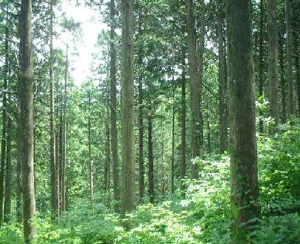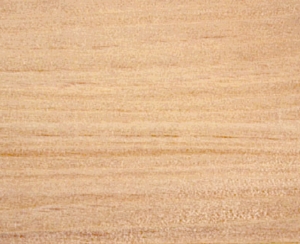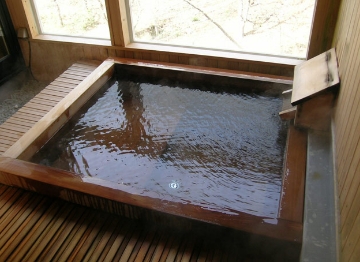Hiba
Thujopsis dolabrataSoftwood
Family: Cupressaceae
Another name for Hiba is "Asunaro". Its origin derived from "It will become Hinoki tomorrow," implying an image of its inferiority to Hinoki. However, due to the unique fragrance of Hiba (hinokitiol), it has durability so that it will not spoil to the core even if it dies. For that reason, Hiba is by no means of inferior species to Hinoki.


FEATURES
Characteristics of this kind of wood can be easily distinguished from others because of its unique fragrance. It is also highly durable and resistant to water and moisture, so it is often used for such as sill. As in Chusonji Temple in Hiraizumi, where there were no good Hinoki in the surroundings, it is known that Hiba had been often used for buildings such as temples. Specific gravity in air-dry ranges from 0.37 to 0.55 (0.45 in average). Because of its toughness and durability, there is a demand as sills in wooden houses, even outside the growing area. Not a small number of houses use posts of Hiba. As the color of heartwood is pale yellow and the sapwood is yellowish white, the difference in color is little. There are not much differences in shapes of the cells within the annual ring, and the texture of the surface is fine.
USAGE
Hiba is mainly used for building. In particular, sills and joist of Hiba are popular. Others are tools, bathtub and lacquerware base (Wajima graining in the Noto district), etc. for its preservative quality and strength.

Charactristic Table
| Specific gravity in air-dry |
Mean comefficient shrinkage for 1% change of moisture content(%) |
Surength(Mpa) | Modulus of elastcity in bending(GPa) |
|||
|---|---|---|---|---|---|---|
| Radial direction | Tangential direction | Bending surenght | Longitudinal compressive Surenght |
Shear strength parallel to grain |
||
| 0.45 | 0.19 | 0.27 | 74 | 39 | 7.4 | 8.8 |


